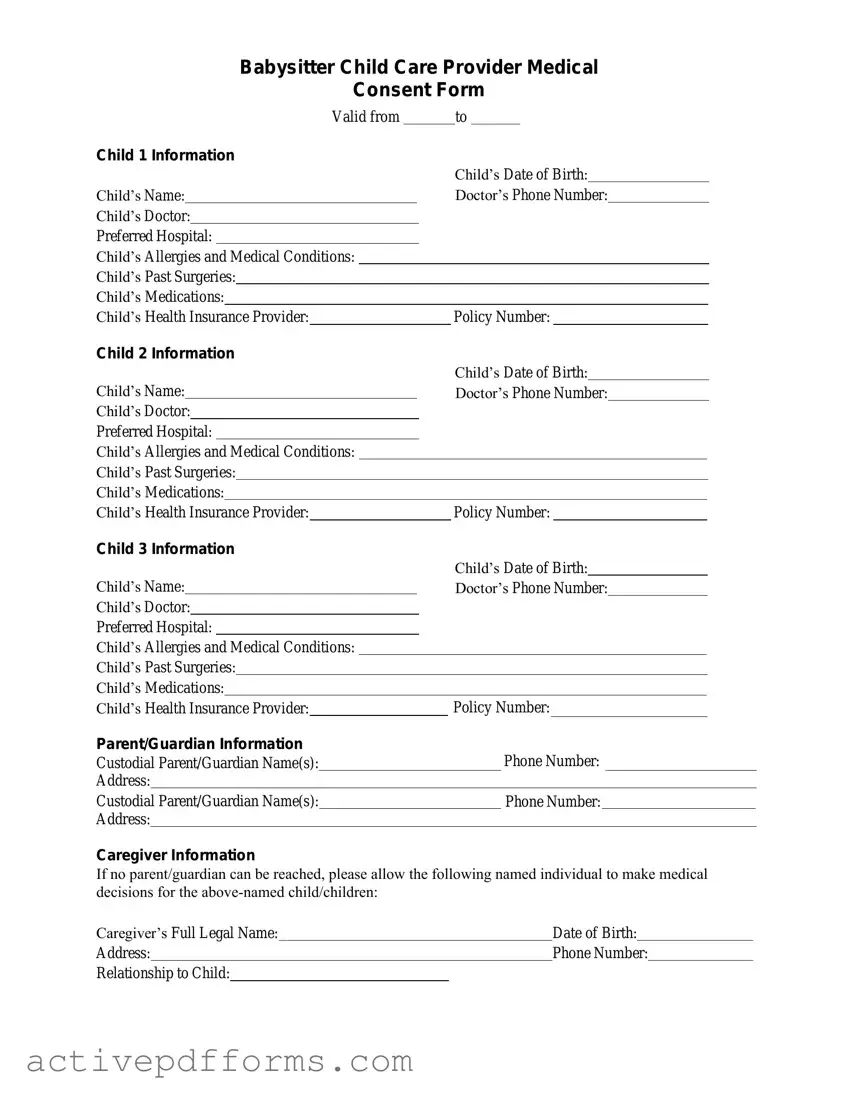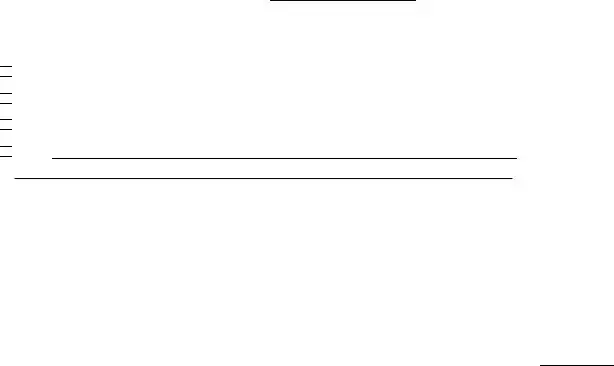Free Medical Consent Babysitter PDF Template
A Medical Consent Babysitter Form is a vital document that allows a babysitter or child care provider to make emergency medical decisions for a child in the parents' absence. It lists detailed information about each child, including medical conditions, allergies, preferred hospital, and health insurance details, ensuring that care providers are fully informed in urgent situations. This form also details the consent given by parents for babysitters to share information with medical personnel, authorize medical treatments, or call an ambulance, thereby safeguarding the child's health until the parents can be reached.
Edit Medical Consent Babysitter Now



 Sharing personal information about my child/children with emergency personnel.
Sharing personal information about my child/children with emergency personnel. 
 Authorizing use of
Authorizing use of 
 Authorizing use of an ambulance for transport.
Authorizing use of an ambulance for transport. 
 Other:
Other: